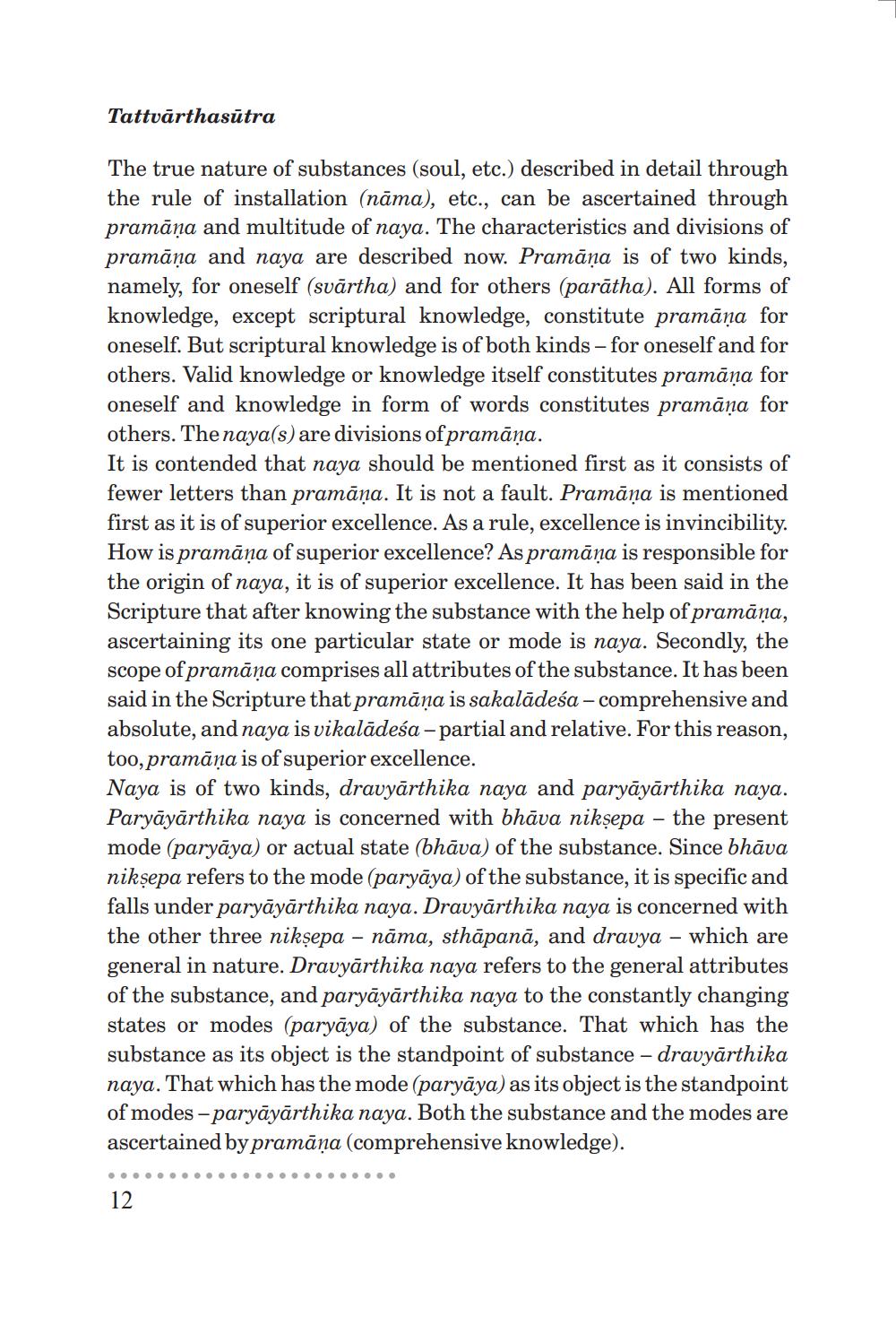________________
Tattvārthasūtra
The true nature of substances (soul, etc.) described in detail through the rule of installation (nāma), etc., can be ascertained through pramāṇa and multitude of naya. The characteristics and divisions of pramāna and naya are described now. Pramāna is of two kinds, namely, for oneself (svārtha) and for others (parātha). All forms of knowledge, except scriptural knowledge, constitute pramāņa for oneself. But scriptural knowledge is of both kinds - for oneself and for others. Valid knowledge or knowledge itself constitutes pramāņa for oneself and knowledge in form of words constitutes pramāna for others. The naya(s) are divisions of pramāņa. It is contended that naya should be mentioned first as it consists of fewer letters than pramāņa. It is not a fault. Pramāņa is mentioned first as it is of superior excellence. As a rule, excellence is invincibility. How is pramāņa of superior excellence? As pramāņa is responsible for the origin of naya, it is of superior excellence. It has been said in the Scripture that after knowing the substance with the help of pramāņa, ascertaining its one particular state or mode is naya. Secondly, the scope of pramāņa comprises all attributes of the substance. It has been said in the Scripture that pramāna is sakalādesa-comprehensive and absolute, and naya is vikalādeśa - partial and relative. For this reason, too, pramāņa is of superior excellence. Naya is of two kinds, dravyārthika naya and paryāyārthika naya. Paryāyārthika naya is concerned with bhāva niksepa - the present mode (paryāya) or actual state (bhāva) of the substance. Since bhāva niksepa refers to the mode (paryāya) of the substance, it is specific and falls under paryāyārthika naya. Dravyārthika naya is concerned with the other three niksepa - nāma, sthāpanā, and dravya – which are general in nature. Dravyarthika naya refers to the general attributes of the substance, and paryāyārthika naya to the constantly changing states or modes (paryāya) of the substance. That which has the substance as its object is the standpoint of substance - dravyārthika naya. That which has the mode (paryāya) as its object is the standpoint of modes – paryāyārthika naya. Both the substance and the modes are ascertained by pramāna (comprehensive knowledge).
12




